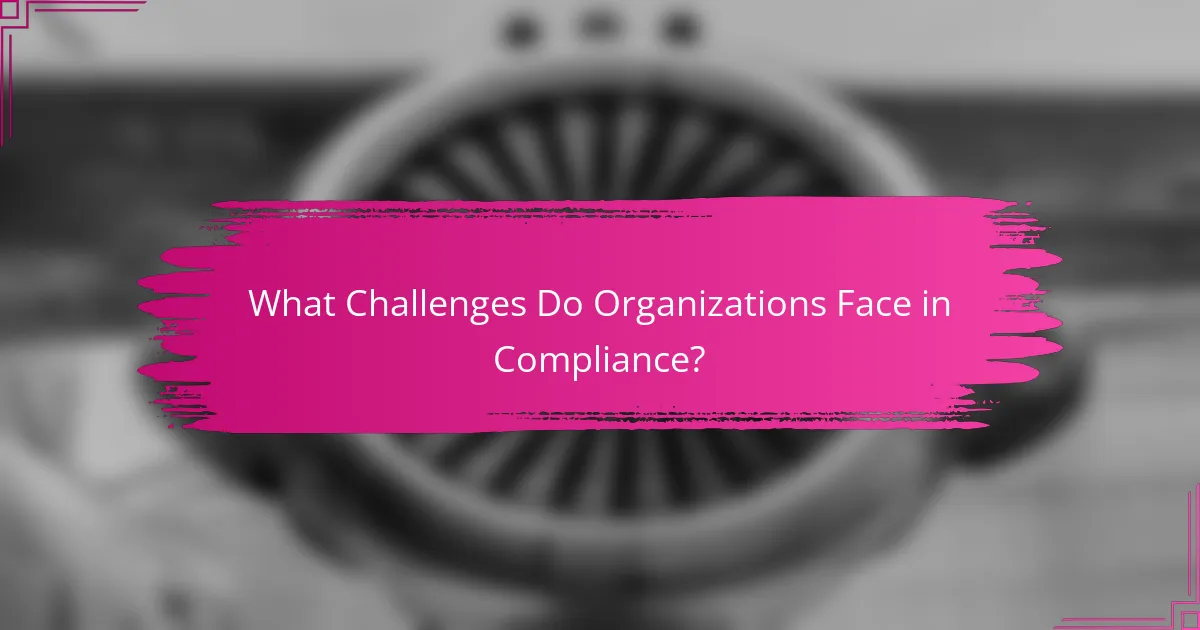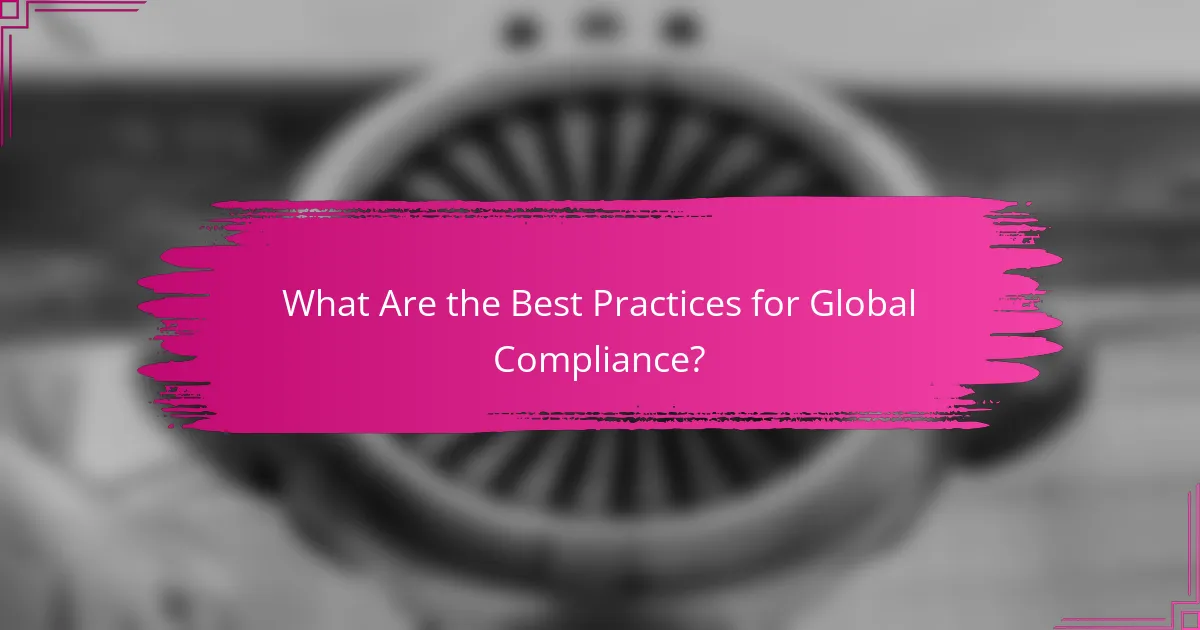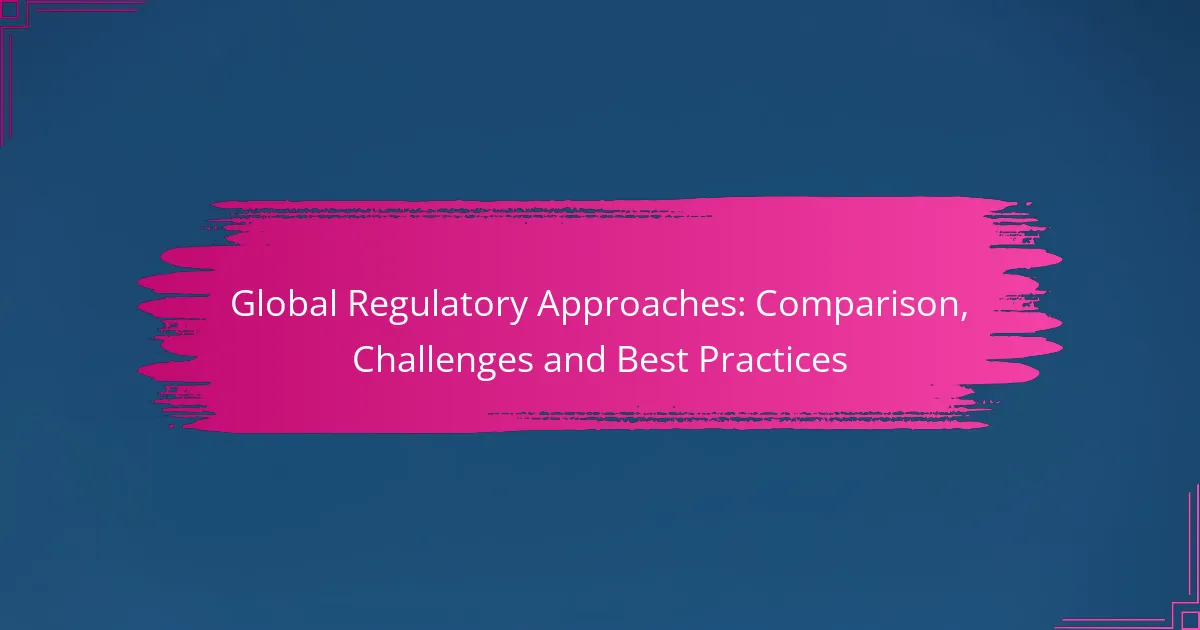Global regulatory approaches differ widely across regions, with each jurisdiction adopting distinct frameworks to tackle industry-specific challenges. For businesses operating internationally, understanding these variations is essential to successfully navigate the complex compliance landscape and implement effective strategies that align with both regulatory requirements and organizational objectives.

You can explore more about these topics on our homepage.
What Are the Key Global Regulatory Approaches?
Global regulatory approaches vary significantly across regions, with each jurisdiction implementing unique frameworks to address industry-specific challenges. Understanding these approaches is crucial for businesses operating internationally, as they must navigate diverse compliance landscapes.
European Union Regulations
The European Union (EU) employs a comprehensive regulatory framework that emphasizes harmonization across member states. Key regulations include the General Data Protection Regulation (GDPR) for data privacy and the REACH regulation for chemical safety, which require businesses to adhere to strict compliance standards.
Companies must ensure that their products meet EU standards before entering the market, which can involve extensive documentation and testing. Non-compliance can result in heavy fines, often reaching millions of euros, making it essential for businesses to stay informed about regulatory updates.
United States Regulations
In the United States, regulatory approaches are often sector-specific, with agencies like the Food and Drug Administration (FDA) and the Environmental Protection Agency (EPA) overseeing compliance. This decentralized system can lead to variations in regulations across states, creating additional complexity for businesses.
For instance, the FDA regulates food and drug safety, while the EPA focuses on environmental protection. Companies must navigate these regulations carefully, as violations can lead to significant penalties and reputational damage.
Asia-Pacific Regulatory Frameworks
The Asia-Pacific region features a diverse array of regulatory frameworks, influenced by varying economic development levels and cultural contexts. Countries like Japan and Australia have established robust regulatory systems, while others may still be developing their compliance structures.
In Japan, for example, the Pharmaceuticals and Medical Devices Agency (PMDA) oversees drug approval processes, while Australia has the Therapeutic Goods Administration (TGA). Businesses must adapt their strategies to meet local requirements, which can differ widely even within the region.
You can explore more about this topic in ethical AI regulatory frameworks.
Comparative Analysis of Approaches
When comparing global regulatory approaches, key differences emerge in enforcement, compliance costs, and the speed of regulatory changes. The EU tends to have stricter regulations with higher compliance costs, while the U.S. offers a more flexible environment but with potential for greater variability.
In the Asia-Pacific, the regulatory landscape is often less predictable, requiring businesses to conduct thorough market research. Companies should prioritize understanding local regulations and consider engaging local experts to navigate these complexities effectively.

What Challenges Do Organizations Face in Compliance?
Organizations encounter several challenges in compliance, including navigating diverse regulations, managing resources effectively, and adapting to technological changes. These hurdles can complicate the implementation of effective compliance strategies across different jurisdictions.
Diverse Regulatory Requirements
Organizations must contend with a wide array of regulatory requirements that vary significantly by country and industry. For instance, financial services in the EU are governed by the MiFID II directive, while healthcare in the U.S. is subject to HIPAA regulations. This diversity necessitates a thorough understanding of local laws and international standards.
To manage these varying requirements, companies should conduct regular compliance audits and maintain updated documentation. Utilizing compliance management software can also streamline the process of tracking and adhering to different regulations.
Resource Allocation Issues
Effective compliance often requires substantial resources, including personnel, training, and technology. Organizations may struggle to allocate sufficient budget and staff to compliance functions, especially in smaller firms where resources are limited. This can lead to gaps in compliance efforts and increased risk of violations.
To optimize resource allocation, organizations should prioritize compliance tasks based on risk assessments and regulatory impact. Developing a dedicated compliance team, even if small, can enhance focus and effectiveness in managing compliance obligations.
Technological Adaptation
As regulations evolve, organizations must adapt their technology to ensure compliance. This includes implementing systems for data protection, reporting, and monitoring compliance activities. The rapid pace of technological change can make it challenging to keep systems updated and compliant with new regulations.
Investing in scalable technology solutions that can adapt to changing regulatory landscapes is crucial. Organizations should also consider training staff on new technologies to ensure they are equipped to handle compliance-related tasks effectively.

How to Choose the Right Regulatory Strategy?
Choosing the right regulatory strategy involves aligning your business objectives with compliance requirements. Consider the specific industry regulations, stakeholder expectations, and potential risks to develop an effective approach.
Assessment of Business Needs
Start by clearly defining your business goals and identifying the regulatory requirements that impact those objectives. This assessment should include an analysis of market conditions, operational capabilities, and the competitive landscape.
For example, a tech startup may need to prioritize data protection regulations like GDPR if operating in Europe, while a pharmaceutical company must focus on FDA compliance in the United States. Understanding these needs helps tailor your regulatory strategy effectively.
Stakeholder Engagement
Engaging stakeholders is crucial for successful regulatory strategy implementation. Identify key stakeholders, including employees, customers, regulators, and investors, and involve them in the decision-making process.
Regular communication and feedback loops can help address concerns and build trust. For instance, hosting workshops or surveys can provide valuable insights into stakeholder expectations and foster a collaborative approach to compliance.
Risk Management Frameworks
Implementing a robust risk management framework is essential for navigating regulatory challenges. This framework should identify potential risks, assess their impact, and outline mitigation strategies.
Consider using tools like risk matrices or heat maps to visualize and prioritize risks. For example, a financial institution might focus on anti-money laundering regulations, assessing risks associated with customer transactions and implementing controls accordingly.

What Are the Best Practices for Global Compliance?
Best practices for global compliance involve implementing structured processes that ensure adherence to international regulations and standards. These practices help organizations mitigate risks and maintain operational integrity across different jurisdictions.
Regular Training and Education
Regular training and education are crucial for ensuring that employees understand compliance requirements. Organizations should conduct training sessions at least annually, focusing on relevant regulations and company policies.
Consider using a mix of in-person workshops and online courses to cater to different learning preferences. Regular updates on compliance changes should also be communicated promptly to keep everyone informed.
Utilizing Compliance Technology
Utilizing compliance technology can streamline processes and enhance monitoring capabilities. Tools like compliance management software help track regulatory changes, manage documentation, and automate reporting tasks.
Investing in technology can reduce manual errors and save time. Look for solutions that integrate with existing systems to ensure a seamless workflow and enhance data accuracy.
Continuous Monitoring and Evaluation
Continuous monitoring and evaluation are essential for maintaining compliance over time. Organizations should establish key performance indicators (KPIs) to assess compliance effectiveness regularly.
Implementing regular audits and assessments can help identify gaps and areas for improvement. Consider using a risk-based approach to prioritize monitoring efforts based on potential impact and likelihood of non-compliance.

How Do Local Variants Affect Global Strategies?
Local variants significantly influence global strategies by introducing unique regulatory, cultural, and operational challenges. Companies must adapt their approaches to align with local laws and consumer expectations while maintaining a cohesive global vision.
Regional Adaptations
Regional adaptations are crucial for businesses operating in multiple markets. Each region may have distinct regulations, consumer behaviors, and market dynamics that require tailored strategies. For example, a product that succeeds in the European Union may need adjustments to meet the specific standards and preferences of Southeast Asian consumers.
When adapting strategies, consider local compliance requirements, such as data protection laws like GDPR in Europe or varying labeling standards in different countries. Understanding these nuances can prevent costly missteps and enhance market acceptance.
To effectively implement regional adaptations, conduct thorough market research and engage local experts. This approach helps identify key differences and opportunities, ensuring that your global strategy resonates with local audiences while adhering to regulatory frameworks.
